SMITHSONIAN CENTER FOR FOLKLIFE & CULTURAL HERITAGE
How Alicia D. Williams Is Reviving Storytelling for Black Children
Williams wanted a different story for her daughter—and for herself. So, she set out to write it.
/https://tf-cmsv2-smithsonianmag-media.s3.amazonaws.com/blogging/featured/alicia-d-williams.jpg)
Newbery Honoree Alicia D. Williams is the author of Genesis Begins Again and the new picture book Jump at the Sun, the first biography of Zora Neale Hurston written for children.
Zora looked up to the sky: I’m coming for you, sun.
And the sun smiled down: I know.
When I spoke with Alicia D. Williams in August, her debut novel had been out for a year and a half. Written for a middle-school audience, Genesis Begins Again has readers follow thirteen-year-old Genesis, a dark-skinned Black girl from Detroit with a dream to sing, on a journey from self-hatred to the beginnings of self-acceptance.
The novel is critically acclaimed and has been covered in the New York Times, CNN, and NPR. In 2020, it received the Newbery Honor for its contributions to children’s literature. But Williams told me about a time when Genesis was only a figurative North Star—blurry, bright, and distant.
“I kept telling people, ‘I’m gonna write a book. I’m gonna write a book. I’m gonna write a book,’ because I still needed this affirmation.” I watched her eyes press closed as frustration slowed that last word.
Williams talked with me over Zoom, sitting at a breakfast table in her Charlotte home as I listened from the coffee table in my Austin apartment. If I was with her in person, I’d be able to better make out the collage of large photo frames on the wall behind her. There’s one of two women smiling, one’s chin perched on the other’s shoulder. It’s a bit out of focus, but the smiles are identical.
“She is the best thing in my life,” Williams told me of her daughter. “I had learned self-hate. I learned it because we get pointed out in our family—our features, our bodies. ‘You got that high butt,’ and the way they said it, you immediately become ashamed. It sticks with you. And I was looking in the mirror one day, and I was just grabbing on my love handles and just hating myself.” She turns to the side. “And I look over, and I see her there.”
Williams paused for a second.
“I'm not telling my daughter that she’s ugly, and she’s not good enough, and that she’s not beautiful. I’m not telling her that,” she reiterated. “But I realized I was teaching her how to hate herself. And that’s when I was like, whoa, something’s gotta definitely change.”
Williams wanted a different story for her daughter—and for herself. So, she set out to write it. At the time, she was trying to get into theater in Charlotte but was struggling to find acting jobs. “How can I make it?” Williams remembered thinking. “I can write a play. Shoot, I can make my own destiny—and I would write. And that’s how the storytelling began.”
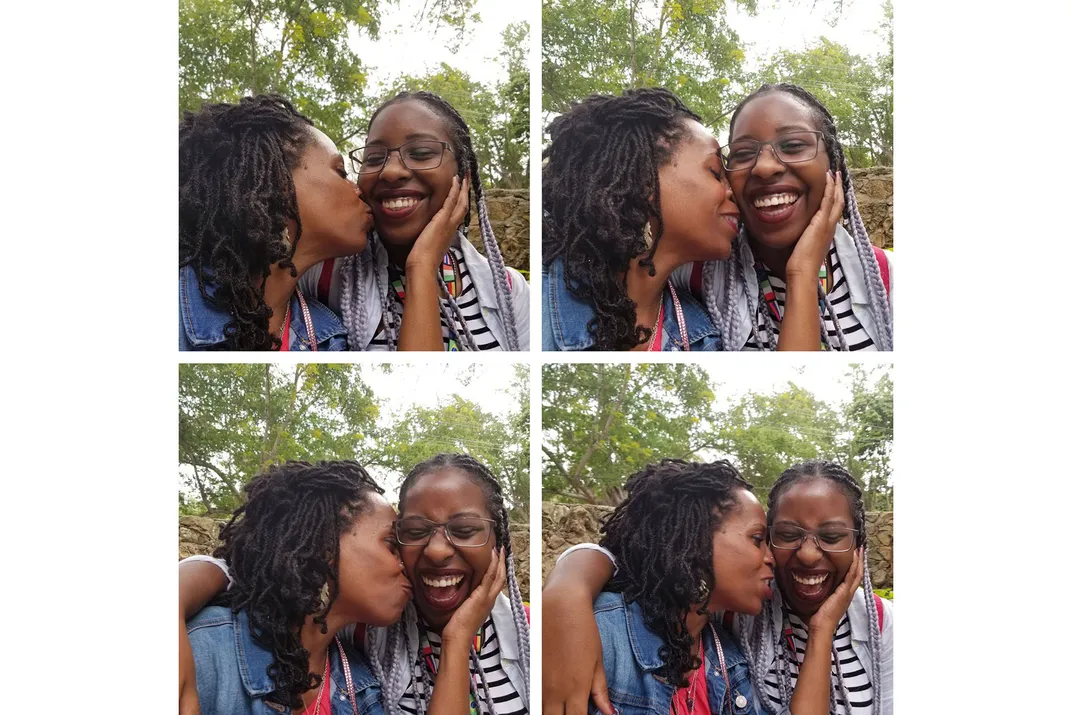
She began to write one-woman plays based on folktales like those of Brer Rabbit and Brer Fox and historical figures like Mamie Till, Myrlie Evers, and Margaret Garner. In doing so, she created her own acting opportunities. “I wrote one-woman shows and presented them, but I thought—” she paused to search for the words. “That's not enough.”
Williams decided to pursue a graduate degree in writing. “I wanted my daughter to see, if Mommy can do it, then I can do it.” Her master’s thesis became the first iteration of Genesis Begins Again, which she would publish after graduating and beginning work as a teaching assistant.
Notable for its honesty around issues of colorism, mental health, and parental alcoholism, the novel makes no pretense that self-love is easy. The book starts with Genesis adding to an unfinished list that some classmates had given her— “100 Reasons Why We Hate Genesis”—similar to a list that Williams herself received as a child. At the end of the novel, Genesis tears up the sheet of paper and decides not to make another list, not even one of things she loves about herself.
“I would be a liar. I would lie to the readers if she started that list over right away,” Williams told me. “That new list might take a long time, and I really wanted people to realize a lot of the first list, a lot of the things that we feel about colorism, or hating within a community, or people hating from outside, it’s the boundaries that people create for us. It’s the reasons that they give us. I think the biggest courage is to say, I don’t own that. Now how do we create our own images, our own self-worth? How do we create that?”
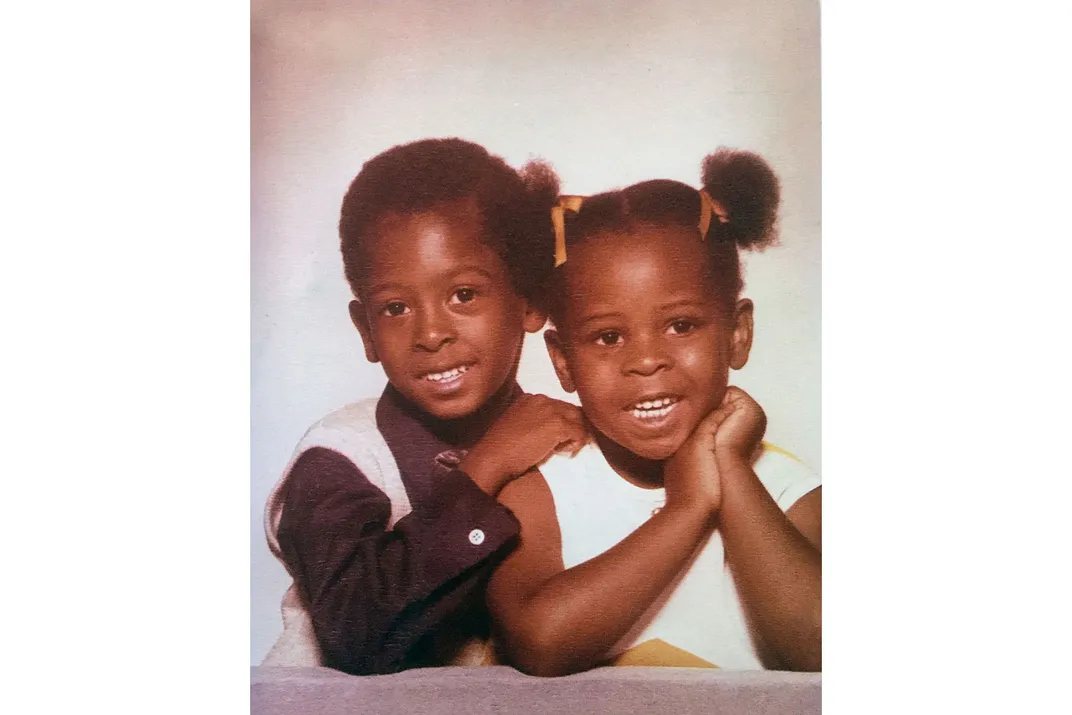
Williams found her answer in storytelling. While growing up in Detroit, she would listen to her relatives share a familiar lineup of stories every holiday. “We would laugh just as hard year after year, and I remember thinking if I could just captivate a room like that, even when telling the same story over again.”
Stories became an outlet for Williams. “I grew up heavy, shy, teased a lot for being fat. And so, I hid in books. That was my escape: stories. But I wasn’t a writer then. It’s just that I loved the stories.”
On Sunday afternoons after church service, Williams would find herself soaking in as much storytelling as she could. “I was surrounded by older people and older teenagers who told me stories about their lives. With my aunts and uncles, they all had this cadence that brought it to life in my head. I was so quiet that I couldn’t do it, but I absorbed it.”
Williams searched for her own storytelling voice, first as an aspiring actor, then as an educator and children’s writer. “How do I tell a story that has this voice that just wraps you up? One that makes you feel at home, like yeah… that’s me,” she said, trailing off, before laughing to add, “And then you can tell it over and over again.”
Williams found inspiration and confidence in the legacies of Black icons. Through her teaching and writing, she encourages kids to learn and tell the stories of Black artists, authors, and activists, many of which often go untold in schools. In Genesis Begins Again, Genesis is introduced to the music of Billie Holiday, Etta James, and Ella Fitzgerald by her choir teacher, and she learns about Angela Davis from her mother.
Unable to recognize W.E.B. Du Bois’s name, Genesis tells her friend in defense, “Don’t look at me like that! All they ever teach during Black History Month is Martin Luther King, Rosa Parks, and Harriet Tubman. Anybody else, then you’re on your own.”
“I think Genesis needs to know. I think thirteen-year-old me needed to know. If we knew that we weren’t just bowing and tilling land, then perhaps we would have had a little bit of boldness in us. But we weren’t taught that we could be bold. Some of us learned it on our own, and some of us learned it later, but I think Genesis needed to know that there were people who stopped thinking in a box.”
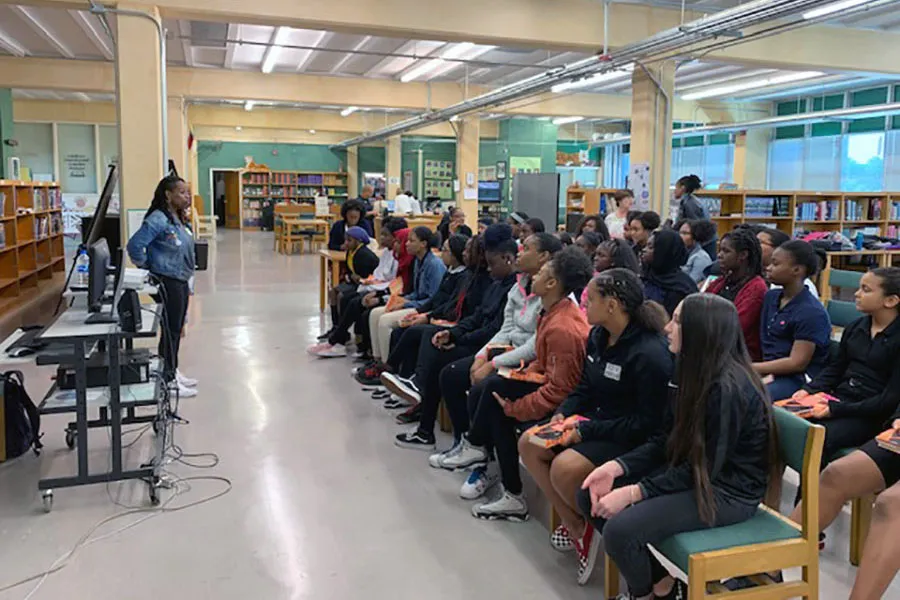
Williams is well aware that, for Black children in this country, the images of who they can be and who their ancestors were are limited and skewed.
“I grew up with just that one paragraph in the textbook about slavery—and they painted them as happy. You know, they got to do this, and they got to do that. No, in reality, they had to do it. But in the books, that was it. We weren’t anything else.”
Williams has seen the pattern repeat while working at elementary, middle, and high schools, teaching history and English. She recalled assistant teaching at an elementary school that still celebrated “Colonial Day,” when the students and teachers would be asked to dress as colonial-era figures.
“I was like, I am not dressing up as a slave. I’m the only Black person on the team. This is uncomfortable!” Williams said. “Imagine our little kids—the one Black kid in the classroom or the two—and they have to dress up and play this, and they do this field trip to colonial town, and your only history is the slavery that’s there. And you gotta come back and do Colonial Day? I was like—” She stopped, shaking her head at a loss for words for a moment. “That’s all the narrative?”
When she’s teaching or leading workshops, Williams sees firsthand how children react when they’re introduced to the stories of prominent Black figures. “For Black and Brown children, it’s boom—a reflection of them.” She closed then opened her hand in a lightbulb gesture, eyes widening to mimic the kids’ moment of realization. “Because, finally, they see someone that looks like them. I wonder if their minds were like mine the first time. Like, are you saying there's more to us? Who kept us in the dark?”
When Williams recounts Black folklore to young kids, she revels in their joy and laughter. As a teacher-artist, she often incorporates movement or music into her lessons. She talks about playing her djembe drum or hip-hop songs for the kids and tracing their influences. She uses music to inspire her students to write about what they hear and how it makes them feel.
“Then they can start changing the narrative,” she said. “They’re in control of the information when they write the narrative themselves, from their point of view, instead of accepting what’s been told to them. Give them the information, and they're the storytellers. That’s what I want.”
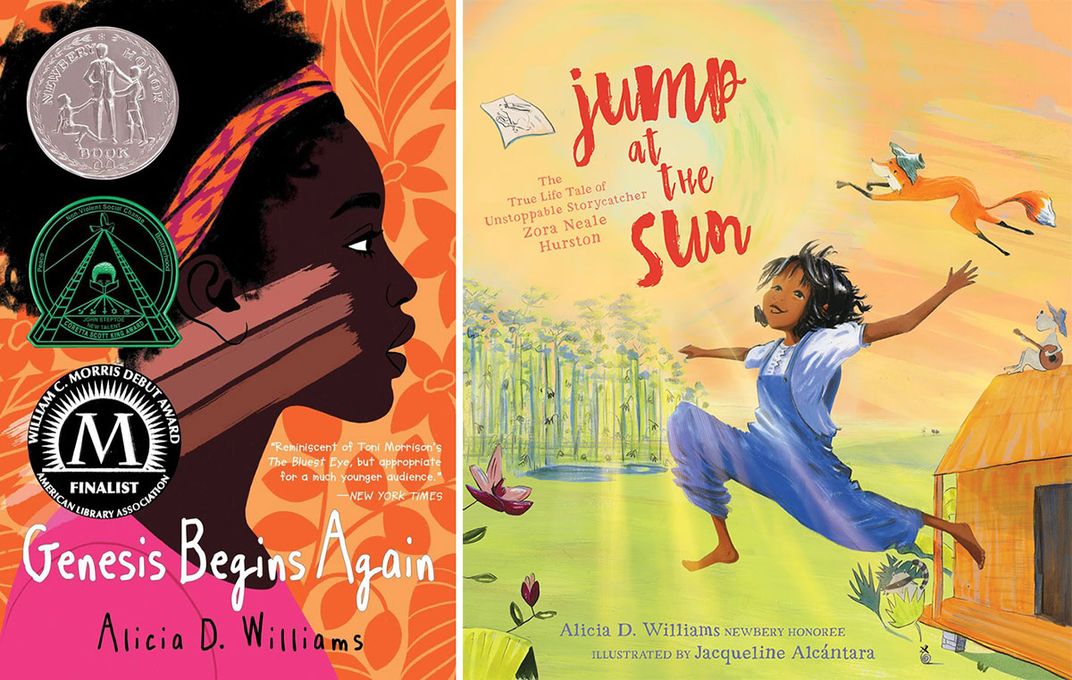
Williams’s latest book, a picture book biography of anthropologist and folklorist Zora Neale Hurston, looks to do just that. Jump at the Sun: The True Life Tale of Unstoppable Storycatcher Zora Neale Hurston is colorful and full of movement. A story about a storyteller, the book not only captures Hurston’s adventures but also depicts snippets of the African American folktales that Hurston collected and retold in Mules and Men. “There’s something in the rhythm of a folktale,” Williams said, especially with “the idea that our ancestors told them too.”
Having read and fallen in love with Hurston in college, Williams said, “that voice stuck with me for so long. I felt like I heard the beginning of this story before writing it.” She recited some early lines of the book, and her voice became lyrical, shifting into cadence. “The voice came to me first.”
Other parts of the writing process didn’t come as easily. “I made a special altar for Zora, and I had an orange candle—because I feel like orange was a color for her—and I petitioned her,” Williams said. “I was like, I need your help to finish this, to get through this.”
Once it was completed, Williams found herself reading through the manuscript and wondering, “Who wrote that?” She smiled, cocking her head to the side and saying, “That's a good line. That’s so cute. I’m like, that came out of me?” She told me, “I think spiritually that maybe Zora was just like, Listen, I don’t have a picture book yet. You’re writing it, so let me help you, honey.”
Williams is bringing forward the stories that she needed to hear as a child. Through her teaching and writing, she is putting the narrative back in the hands of children today. “I want this whole engagement of bringing back the storytelling and oral traditions and sharing them and having fun with them.”
As she geared up for the release of Jump at the Sun in January 2021, Williams could clearly imagine the interaction she hopes her book will facilitate. “I envisioned a parent with their child, telling the story. And I just envisioned these big eyes.” She acted out the scene as she spoke, gesturing in excitement. Her expressions and voice changed, and I could see it too.
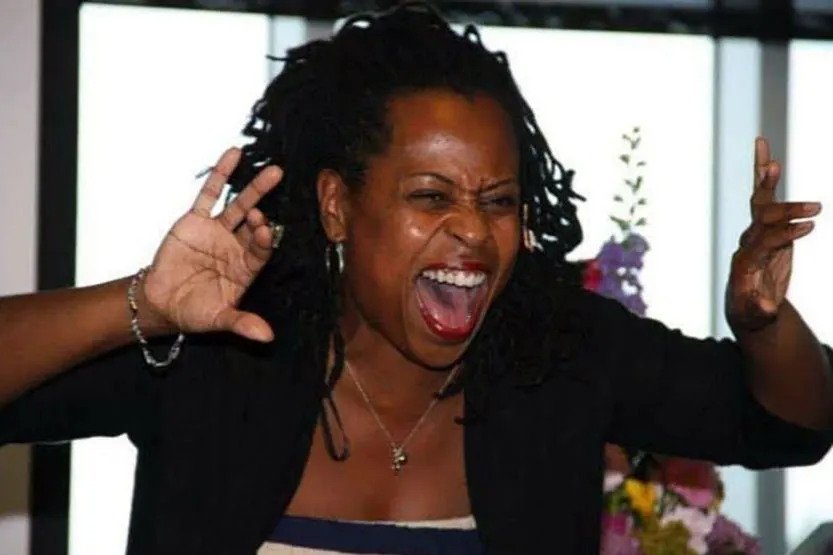
“Oh look at that! Is that Brer Fox? And what’s that?”
“Now, tell me—what do you remember about Brer Fox?”
“He was a trickster, and he said this, and he said—”
“What! He was an ol’ trickster?”
I saw the picture as she painted it for me, of parents passing forward stories filled with color and movement and laughter, and of children ready to tell each story back. I realized this is what affirmation really means for Williams now.
“I just envisioned those lovers of Zora and the folklore and folktales sharing this,” she said. “And a whole revival of getting kids to tell stories again.”
Thanvi Thodati is an intern with the Center for Folklife and Cultural Heritage. She studies neuroscience and Plan II Honors at the University of Texas at Austin and will be graduating this spring.
Find a full list of Alicia D. Williams’s published works on her website. Her book Jump at the Sun: The True Life Tale of Unstoppable Storycatcher Zora Neale Hurston was illustrated by Jacqueline Alcántara.
